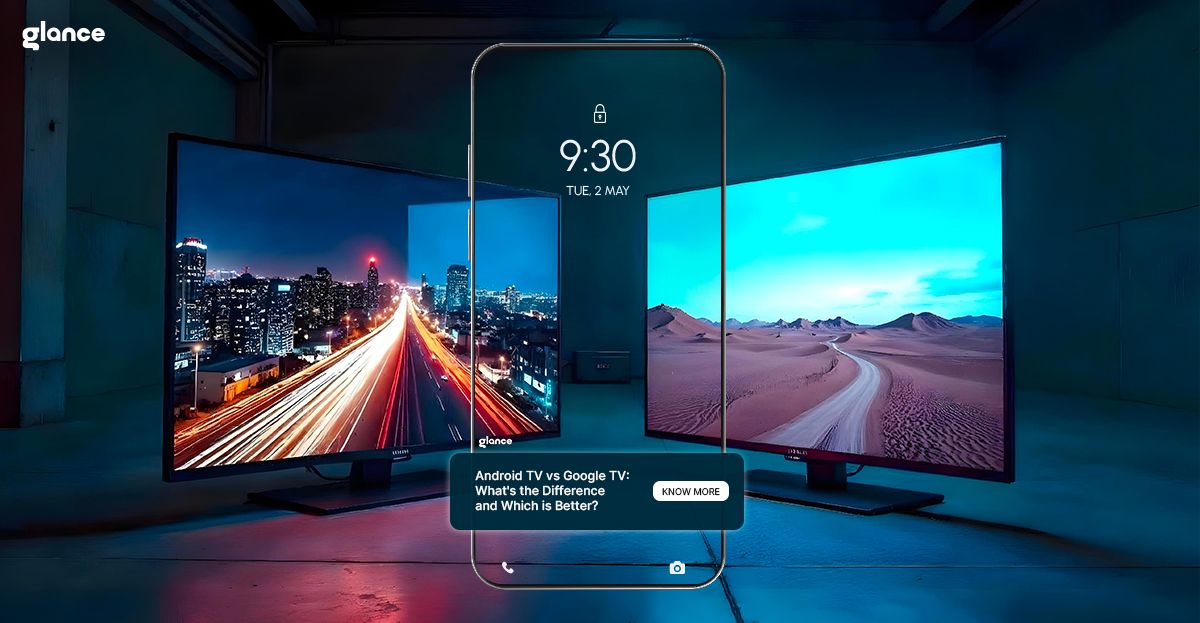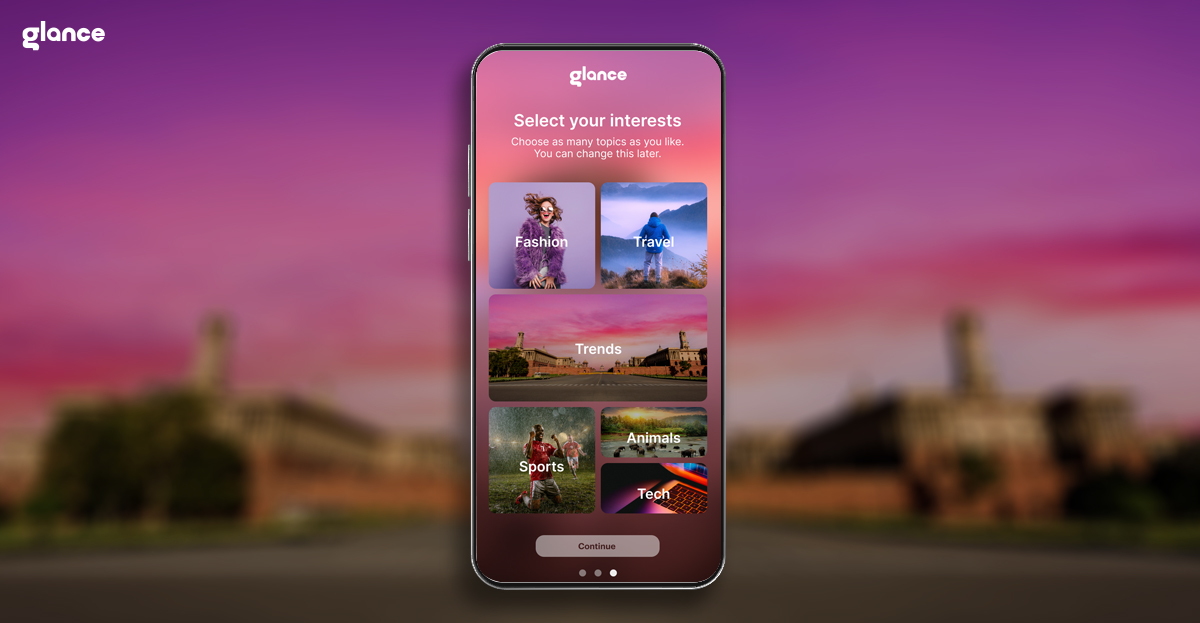Android TV vs Google TV: Key Differences, Features & Upgrade Guide (2025)

Smart TVs have come a long way from being just “TVs with apps.” Today, they act more like intelligent entertainment hubs. Among the most popular platforms, Android TV and Google TV stand out—both developed by Google, yet each offering a distinct user experience. So, if you're in the market for a new television, understanding the Google TV vs Android TV difference is crucial before you make that purchase.
This blog breaks it down clearly: what each platform offers, how they differ, which one suits your lifestyle better, and what unique features you might miss if you choose one over the other.
What is Android TV?

Launched: 2014
Core Focus: App-centric interface
Popular Brands in India: Sony, Mi, OnePlus, TCL
Android TV is a full-featured smart TV operating system based on the Android mobile OS. It offers a straightforward, app-focused experience, allowing users to navigate through a vast array of applications via the Google Play Store. Its integration with Google Assistant and Chromecast enhances usability, while features like Glance TV provide curated content directly on your home screen.
Key Features of Android TV:
- Google Play Store with 7,000+ apps and games
- Voice control via Google Assistant
- Chromecast built-in for casting content
- Custom launchers and content layers supported
- Live TV integration with channel guides
- Dynamic content feeds like Glance TV
What is Google TV?

Introduced: 2020
Core Focus: Content-first navigation
Available On: Chromecast with Google TV, Sony and TCL models
Google TV is essentially a redesigned user interface built on top of Android TV. It offers a personalized, content-centric interface. It aggregates recommendations across streaming services, providing a unified viewing experience. With features like user profiles and advanced parental controls, it caters to individual preferences within a household.
Key Features:
- Personalized recommendations across apps
- Unified search results
- Google Watchlist synchronization
- Multiple user profiles
- Advanced parental controls and kids mode
- Visually cleaner and faster home screen layout
Key Differences Between Android TV and Google TV
Feature | Android TV | Google TV |
Operating Base | Android OS | Android OS (same base) |
User Interface | App-driven | Content-driven |
Content Discovery | Explore via individual apps | Aggregated recommendations |
User Profiles | Not supported | Supported |
Parental Controls | Basic options | Robust controls with dedicated kids mode |
Google Assistant | Available | More deeply integrated |
Casting Support | Chromecast built-in | Chromecast built-in |
Play Store Access | Full access to Android TV apps | Full access |
Unique Content Experiences | Features like Glance TV provide real-time curated updates and infotainment | Limited to system-driven UI layers |
Android TV vs Google TV: Which One Suits You Best?
Choosing between these two platforms isn't about right or wrong—it’s about what fits your lifestyle. Let’s explore a few practical scenarios.
1. Families and Multi-User Homes
If multiple family members watch different types of content, Google TV's user profiles are a huge advantage. Everyone gets their own recommendations and watchlist, and parents can set up safe viewing for kids.
2. Users Who Like Curated Content
If you enjoy bite-sized, visual storytelling like top news, sports updates, or quick infotainment while you sip your morning tea, certain Android TV models with Glance TV integration might suit you better. This layer delivers content without needing to open apps—right from your home screen or even while idle.
3. Budget-Conscious Buyers
Most TVs in the sub-₹25,000 range ship with Android TV, making it the more accessible option. You still get voice controls, Play Store, and casting—but possibly without the polish of Google TV’s content-first interface.
4. Clean UI and Discovery-Focused Viewers
If you dislike searching through apps and want the TV to tell you what to watch, Google TV’s AI-powered recommendations can be a game-changer. It saves time and helps you discover content you might have missed.
5. Tech Enthusiasts and Customizers
Android TV offers greater flexibility for customization, allowing users to tweak settings, sideload apps, or enhance their interface with additional launchers and features. Glance TV, for instance, enhances the lean-back experience by turning your TV into a rich display canvas, even when you’re not actively watching.
Go for Google TV if: | Go for Android TV if: |
You want personalized recommendations across apps. | You want more customization and app flexibility. |
You need support for multiple user profiles. | You’re looking for richer idle screen content experiences like Glance TV. |
You appreciate a clean, content-first interface. | You’re buying on a budget and still want full access to Google services. |
Eliminating the Debate of Google TV Vs Android TV: Can Google TV Run Android Apps?
Yes. This is a common concern, and the good news is that Google TV can run all Android TV apps, since it’s built on the same framework. Whether it’s YouTube, Netflix, Spotify, or regional OTT platforms, everything available on Android TV will work on Google TV.
However, it's worth noting that some unique features and custom layers available on Android TV, like Glance TV, may not yet be fully integrated into the Google TV experience, depending on the brand and model. These content-driven interfaces can offer snackable infotainment, updates, and visual content during screen idle moments—something not natively prioritized in Google TV.
Unique Strengths of Android TV (That Often Go Unnoticed)
While Google TV feels newer and polished, Android TV quietly packs a few features that appeal to practical users:
- Idle Screen Optimization: Through features like Glance TV, Android TV can turn idle moments into engaging infotainment—be it weather, headlines, or lifestyle content.
- Lower Hardware Requirements: Android TV runs smoothly even on entry-level TVs, making it accessible without demanding specs.
- Launcher Customization: Users can install different launchers, which is restricted on Google TV.
Regional Content Discovery: Some Android TV models come with localized content layers that surface trending content in local languages, enhancing regional relevance.
Can You Upgrade from Android TV to Google TV?
In some cases, yes. If your Android TV device is from a supported brand and receives firmware updates, you may be able to upgrade to Google TV. However, older models may not support the new UI due to hardware limitations.
Refer to your TV manufacturer’s website or check Google’s official support page for compatibility.
Conclusion
Understanding the Android TV vs Google TV difference helps you make a more informed decision—not just based on price or brand, but on how you interact with your TV daily. While Google TV offers a slicker interface and smarter recommendations, Android TV’s flexibility and compatibility—with features like Glance TV that enhance passive screen time—still hold strong appeal.
Your choice depends on whether you value content discovery, customization, or affordability. As the best part is whichever you choose, both platforms offer rich ecosystems powered by Google’s technology and evolving user needs.
FAQs related to Google TV Vs Android TV
- What is the difference between Android TV and Google TV?
Android TV uses a traditional app-first interface, while Google TV focuses on personalized, content-first recommendations integrated with Google services. - Can Android TV be upgraded to Google TV?
Some newer Android TV models from Sony, TCL, and Hisense can receive Google TV updates, depending on brand support and system compatibility. - Which TV OS is better for smart home integration?
Google TV offers better smart home integration, with deeper support for Google Nest, voice control, and personalized home dashboard features. - Which is better for streaming Google TV vs Android TV?
Google TV offers a richer experience for cross-platform
streaming and discovery.
5. Does Google TV work with Google Nest/Home?
Yes, Google TV supports integration with Google smart
home devices.
6. Which TV is best, Google or Android or WebOS?
Google TV offers a modern, personalized experience with smart recommendations. Android TV is versatile, widely available, and supports regional features like Glance TV. WebOS is smooth but limited to LG TVs with fewer app options. For Indian users, Google TV or Android TV is generally better for content variety and value.
7. What are the disadvantages of Android TV?
Android TV can feel dated and cluttered. Performance may lag on budget models, and updates depend on the TV brand. It lacks smart personalization and user profiles. However, many Indian TVs enhance Android TV with features like Glance TV, adding dynamic content even when the TV is idle.
8. Can you install Google TV on any TV?
No, you can't install Google TV manually. It comes preloaded on supported TVs or devices like Chromecast with Google TV. Android TVs won’t auto-upgrade unless officially supported. In India, brands like Sony and TCL offer TVs with built-in Google TV for a seamless, modern experience.
9. What are the disadvantages of Google TV?
Google TV has limited customization and no support for third-party launchers. It lacks features like Glance TV for idle screen engagement. Also, recommendations may lean towards global content, requiring tweaks for Indian preferences. It’s often found in higher-priced models, making Android TV a better budget choice.




